Cai Rang Floating Market – The Good, the Bad and the Ugly
Floating markets have existed in Vietnam for as long as goods have been traded. Evidence suggests over 4500 years. The biggest to this day remains the Cai Rang Floating Market.
Being just 3 hours away from Ho Chi Minh City and a 45-minute boat ride from Can Tho, it’s also the most popular. It’s fascinating and charming.
But the boat tour of Cai Rang has its fair share of shortcomings and disappointing moments. The floating market has dwindled after the pandemic to just 10-20% of its former glory and it now feels a lot more touristy than it used to. I know, because I visited in 2018 and again in 2024.
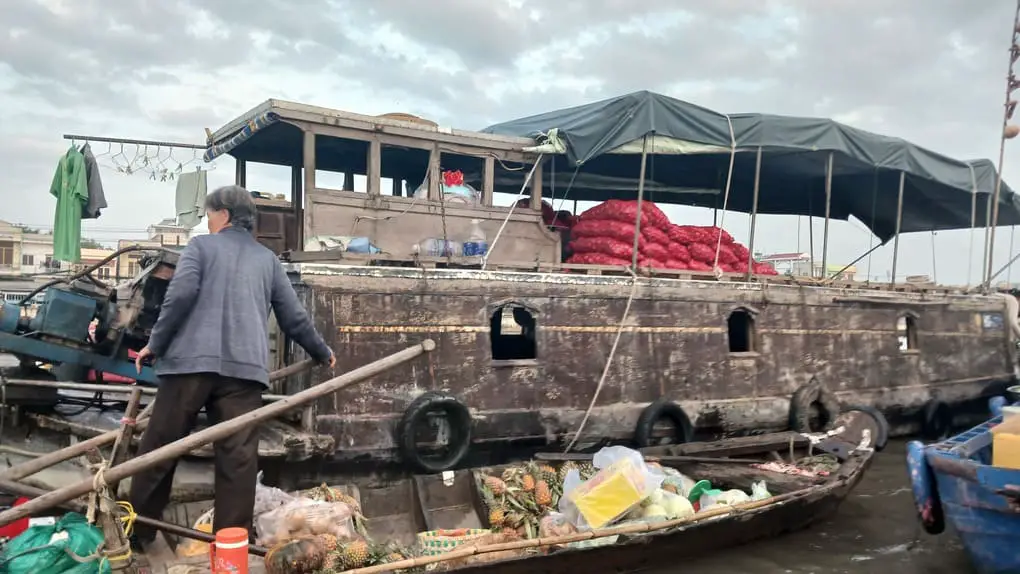
How to go to the Cai Rang Floating Market
Tour
The easiest way to organize a trip to the market is also the most expensive – book an organized tour starting from Ho Chi Minh City.
Most commonly they are 2-day affairs with 2 boat rides, visits to coconut and rice noodles factories, and of course the floating market in the morning.
This tour has stellar reviews and includes visits to My Tho and Ben Tre – other popular towns in the Mekong Delta.
Do It Yourself
It’s not difficult to independently organize a trip to Cai Rang. On the contrary, it is effortless and much cheaper. That’s what I did and I will walk you through it.
Ho Chi Minh City to Can Tho
Chances are you’re already in Vietnam’s largest city – HCMC (Saigon). If you are elsewhere, say Da Nang or Hanoi, there are direct flights to Can Tho, Vietnam’s fourth largest city and the gateway to the Mekong Delta.
In HCMC’s District 1, look for an office of the orangy-green Phương Trang bus company (also called Futa). Buses to Can Tho depart every hour and no prior reservation is necessary. Just turn up and buy a ticket for the next one.
Tickets cost 165.000 VND (~7$) and include a shuttle to the bus station and then a shuttle from Can Tho’s bus station to an address in the city.
Book a boat for the next morning
We stayed at Enjoy Mekong Hostel which is an impressively good value for money. The lady that runs it is quite energetic and almost telepathically knew we were coming and picked us up around the corner where the bus dropped us off.
She offered a boat ride for the next morning at 200.000 VND (~8$) per person if it’s just the two of us, but should more people join, the price would drop to 150k VND pp.
Having done some price research before that, I thought the price was fair. She later gave us back 100.000 VND because 2 other travelers joined the boat ride.
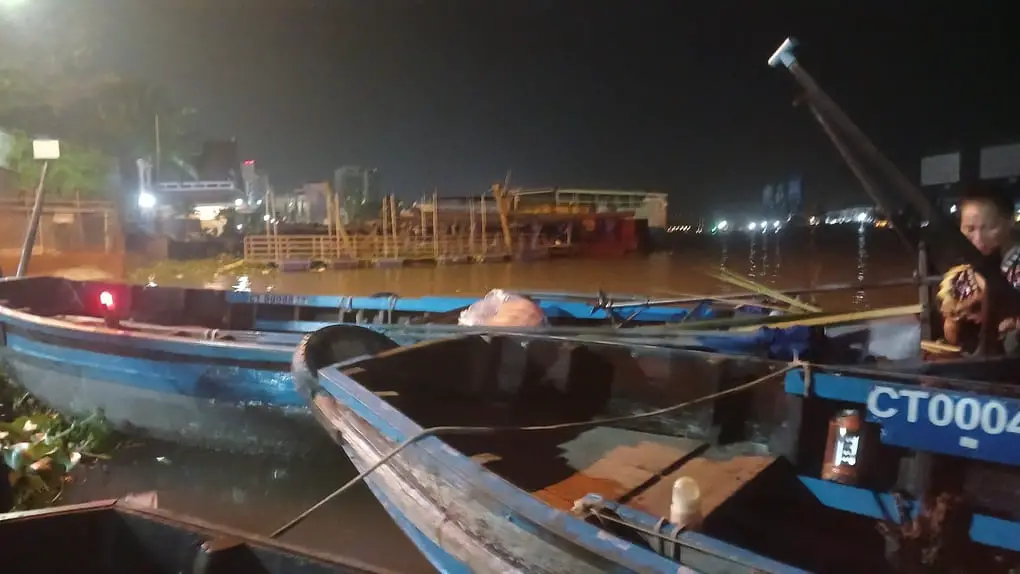
Long story short, a small boat with a capacity of 4 costs 600.000 VND (25$) in total for the tour to the Cai Rang Floating Market.
Alternatively, you can go to Ninh Kieu Wharf and surely someone will approach you to offer a boat or a sampan ride either departing immediately or the next morning.
While we are on the topic of boat rides, you can check out this article about the Van Long boat ride near Ninh Binh.

The Boat Ride
The Floating Market is busiest in the morning around sunrise. That’s why we had to wake up at 5 AM and hurry to the small boat pier led by our driver for the day.
I’m deliberately not calling him a guide, as he didn’t really guide us to anything – he just operated the boat from point A to point B with no information or local insights.
Can Tho to Cai Rang
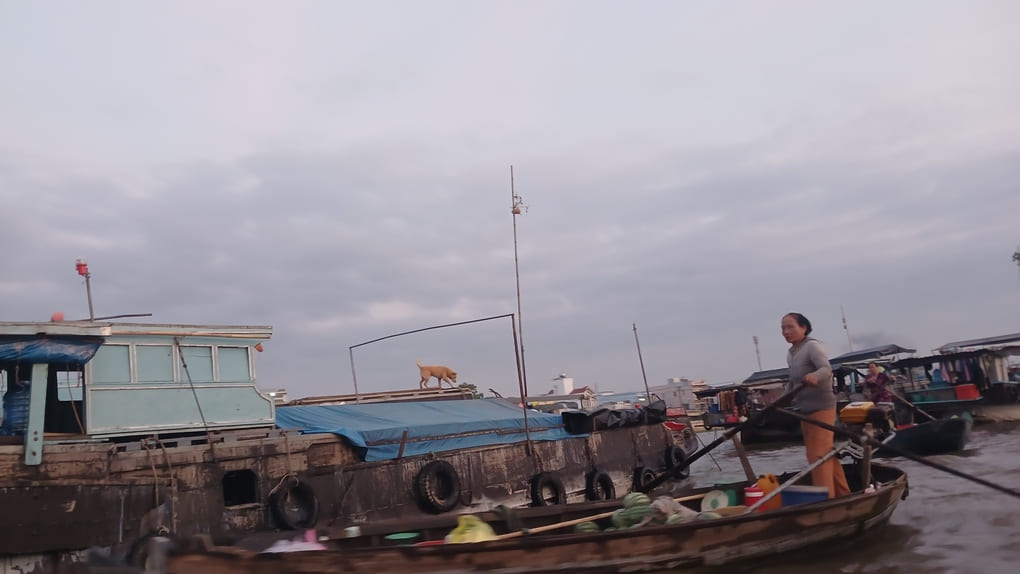
The boat ride to Cai Rang took around 50 minutes. We had one of the slowest boats on the river and I quite enjoyed that. It was a smaller boat with 2 planks for a total of 4 people in contrast with the larger sampans carrying 20 or more tourists.
Morning can be a bit chilly even in this region of the world, so pack a hoodie for the first hour.
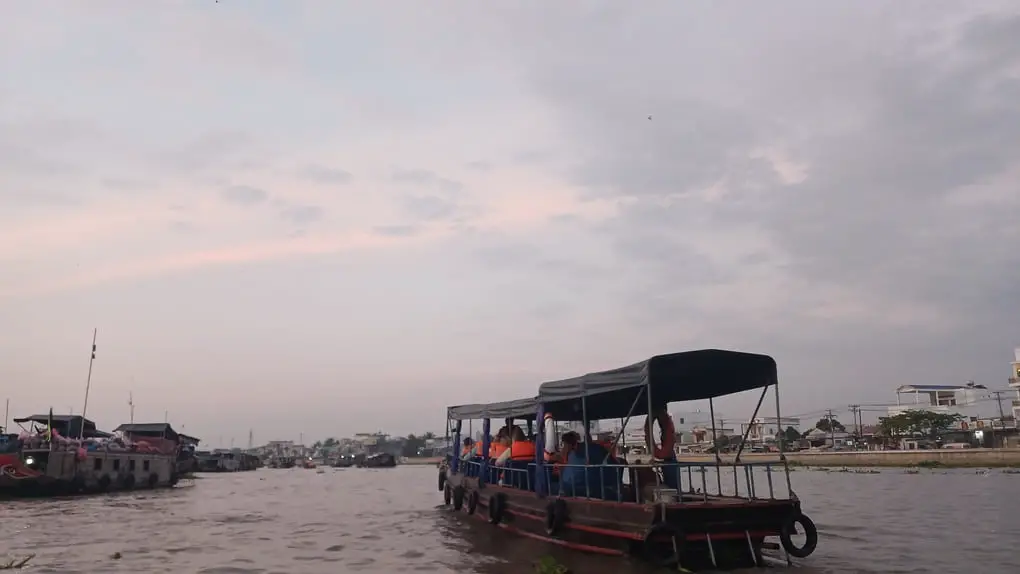
The floating market itself
The market starts right after the Cầu Cái Răng bridge. We got intercepted by a coffee speedboat first, but nobody wanted any, so the coffee-boat quickly went to intercept the next sampan.
Then we did a loop around the market and the various vendors. It’s noisy due to the engines working constantly, so vendors don’t do marketing like in land-based markets through yelling and signs.
Instead, they use a bamboo pole called “Cây Bẹo” on which they attach whatever it is that they sell – oranges, mangoes, pumpkins, durians, etc.
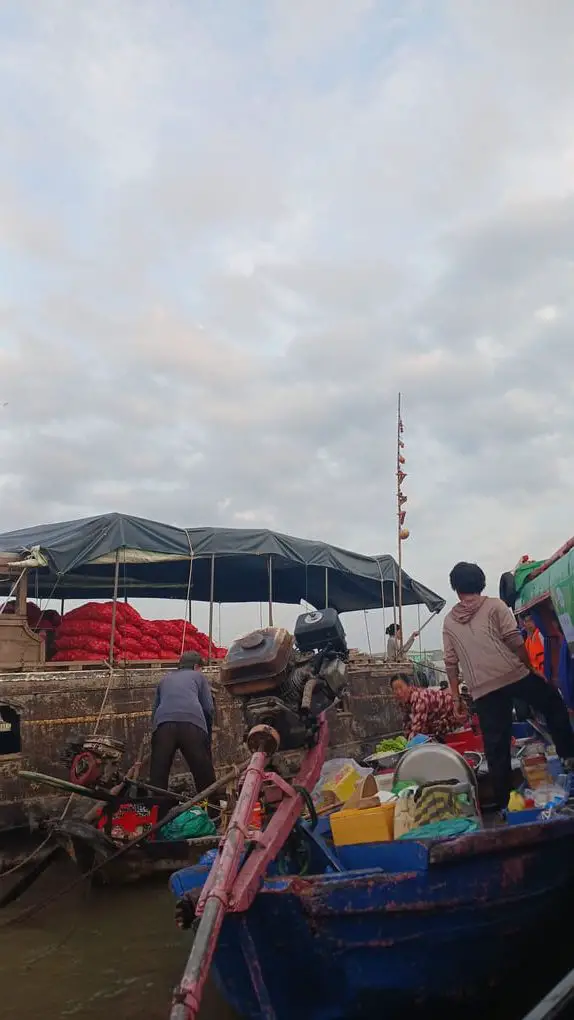
Here came my first realization: the floating market was SMALL! There were more tourist boats than vendors! That’s not how I remembered it from 2018!
Two main reasons for the slow death of the Cai Rang Floating Market:
- The COVID-19 Pandemic. Vendors stopped going during it and haven’t resumed since;
- Infrastructure development: It’s now easier and cheaper to transport goods overland, so why bother with boats at all?
Our driver brought us to a breakfast boat serving noodles soup. This one we tried. It was tasty, a bit overpriced at 40.000 VND (1.7$) but not exorbitant.
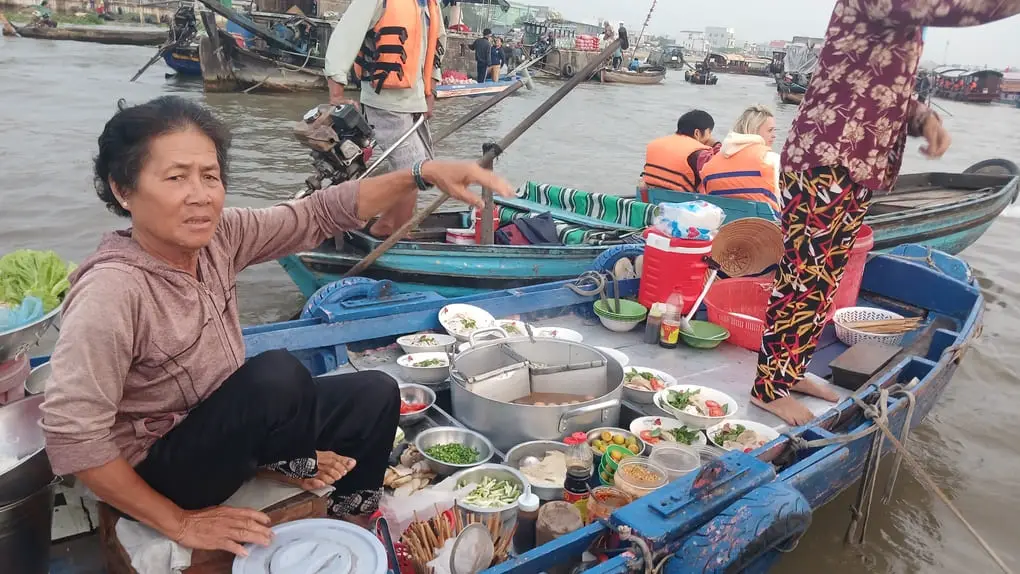
We then did one more short loop around the 40 or so boats, navigating between the constant flow of tourist sampans before going for the other stops on the tour.
The Canal
We then took a turn into one of the canals, apparently to give us a better idea of the local Vietnamese people’s way of life.
Well, we got it, but it wasn’t as positive as intended.
The river itself was polluted, but the canal was filthy on another level.
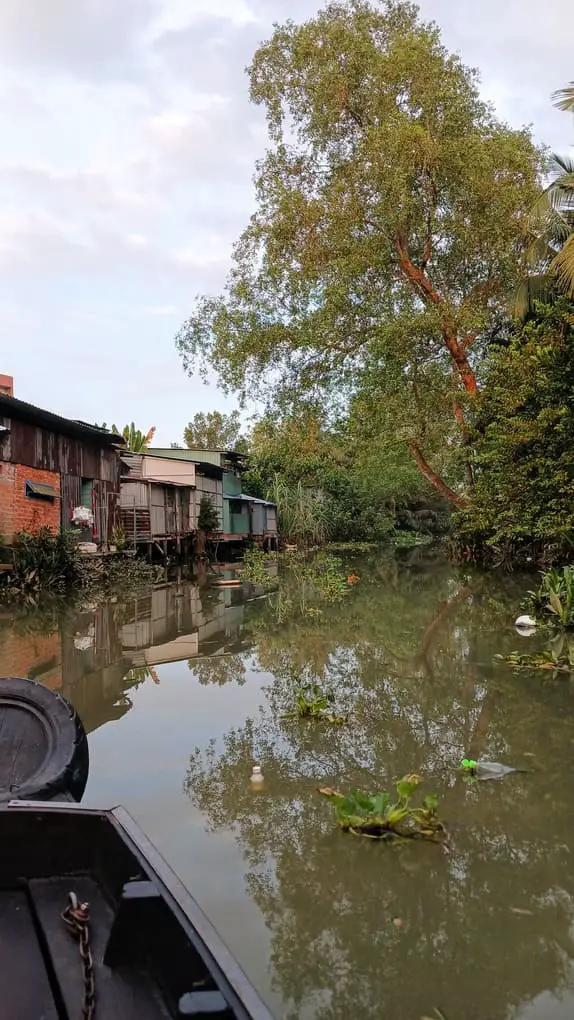
The Floating Market is designated as an intangible cultural heritage which one would assume also includes being kept clean and looking fresh. Unfortunately, it isn’t. Neither by the government nor by the locals themselves.
I won’t go into details about the filth and rubbish: let’s just say that Oscar the Grouch will have a blast here.
Rice Factory
We stopped at what was presented as a Rice Factory although it’s a lot more makeshift and a lot less factory.
There were pit stops for all essential steps of the process of making rice noodles: from mixing to baking, rolling, drying, and lastly shredding.
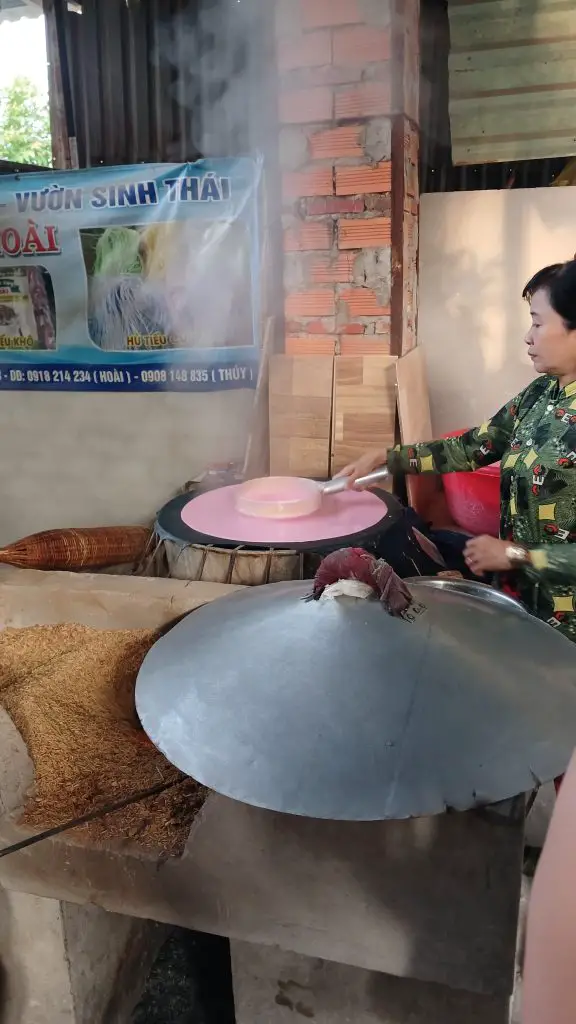
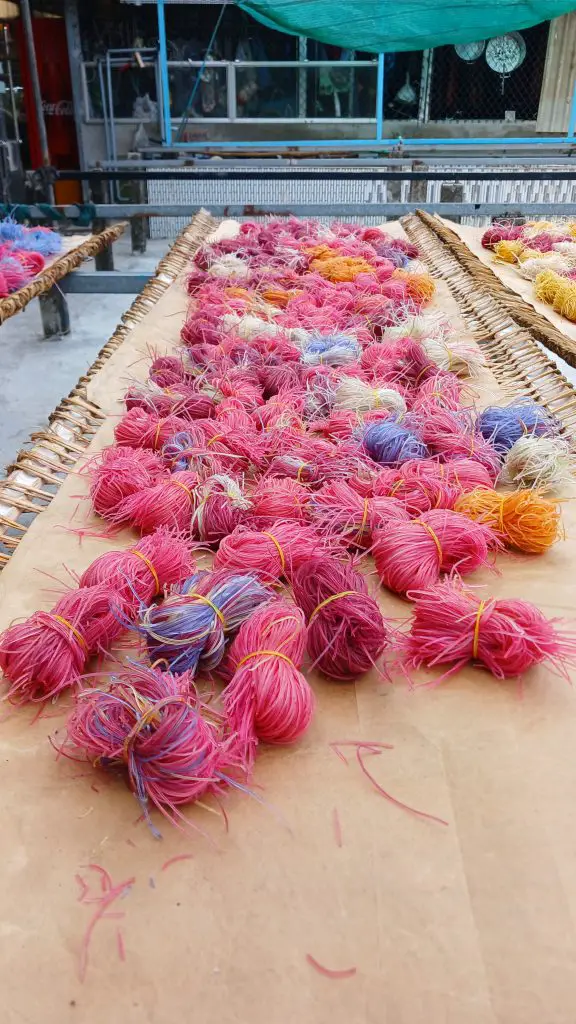
Nobody pushed us to buy anything (which is a common occurrence in Vietnam) although the place was nonetheless set up as a shop for noodles, candy, and jewelry.
You could even try making the noodles yourself under the helpful guidance of the workers there.
Not a lot of written information, locals speak practically 0 English but an interesting place anyway.
Fruit Farm
We set sail once more and around 10 minutes later arrived on the banks of the main river at the entrance to an exotic fruits farm.
Unfortunately, we quickly realized that there was an unexpected entrance fee of 30.000 VND (1.25$). Wait a second… it’s not included in the boat ride? That’s a letdown.
After a quick deliberation, we decided that 30k wasn’t worth it looking at a few trees and the complimentary fruit. Moreover, it really reeked of a touristy trap that one. Pass!

Coconut Candy Shop
Our last stop was at a large boat-turned-shop in the floating market.
I didn’t feel pressured to buy anything here either, which allowed me to freely browse the store. There were a bunch of samples to taste and I dare say I am in love with Vietnamese coconut candy!
The negative here is that prices are higher than they should be or what you can find in the city: 50.000 VND (2$) for a pack of candy, ouch!
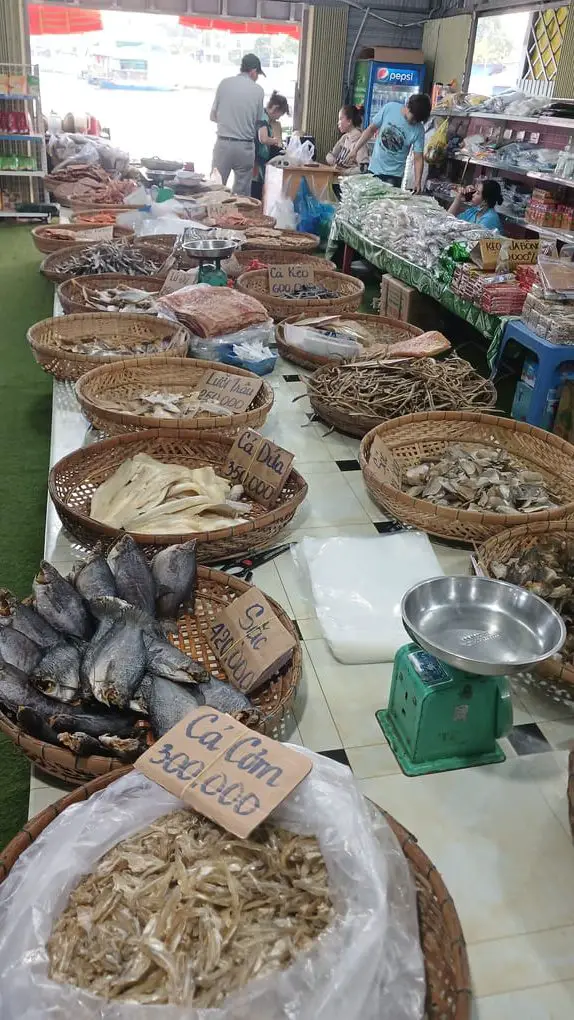
Back to the City
It was time to go back home so we hurdled along with the other tourist sampans back to Can Tho. Sunglasses are almost a must on the return journey with the sun directly in front and the river reflecting sunrays straight into my blue eyes.
We were back on the pier at 9:00 meaning that the whole boat trip to Cai Rang and back took around 3:45 hours.

The Cai Rang Floating Market: Yay or Nay?
I have mixed feelings about the whole experience. On one side I love unique places like this – floating markets are rare and will become even rarer.
On the other side, the experience was mediocre and I felt that tourism was the only thing keeping it alive still – not commerce as it used to be.
| Things I liked | Things I didn’t like |
|---|---|
| It’s a boat ride! | The river and the adjacent canals are polluted. |
| It was easy to organize and affordable. | There were few merchant boats. All the pictures online with hundreds of vendor boats are outdated! |
| I learned how rice noodles are made. | There were more tourist boats than vendors. |
| The soup I had for breakfast was tasty. | The whole experience felt like a designed route for tourists rather than an active, vibrant floating market. |
Alternative Floating Markets
Cai Rang isn’t the only floating market in the Mekong Delta. There are a few in both Can Tho and Vinh Long provinces. They all suffer from the same problems: dwindling vendor numbers and pollution.
- Phong Điền: About an hour further from Cai Rang. Way less visited and less touristy. Only a handful of small boats. Better authenticity overall.
- Cái Bè: Used to rival Cai Rang in terms of popularity but is now down to 4-5 boats (if that), everyone else has moved their business onshore;
- Trà Ôn: A tiny market that’s down to a handful of boats in the morning;
- Châu Đốc: Either defunct or reduced to single-digit boats;
- Long Xuyên: Upstream the Han River from Can Tho with cheaper prices;
- Ngã Năm: Moved onshore as it doesn’t make economic sense to do commerce on water.
The Fate of the Floating Markets
The sad reality for the Mekong Delta floating markets is that they are becoming a thing of the past. As merchants have no economic incentive to return to the water, the only way to keep the rest of the vendors afloat (pun very much intended) is tourism.
But this attempt to resuscitate can only be sustained for so long before even the most touristy of tourists realize that there is nothing authentic anymore in a floating market.
That it’s set up for them as a theater. A reenactment of how it used to be.
Maybe it already is at Cai Rang, I just didn’t realize.

